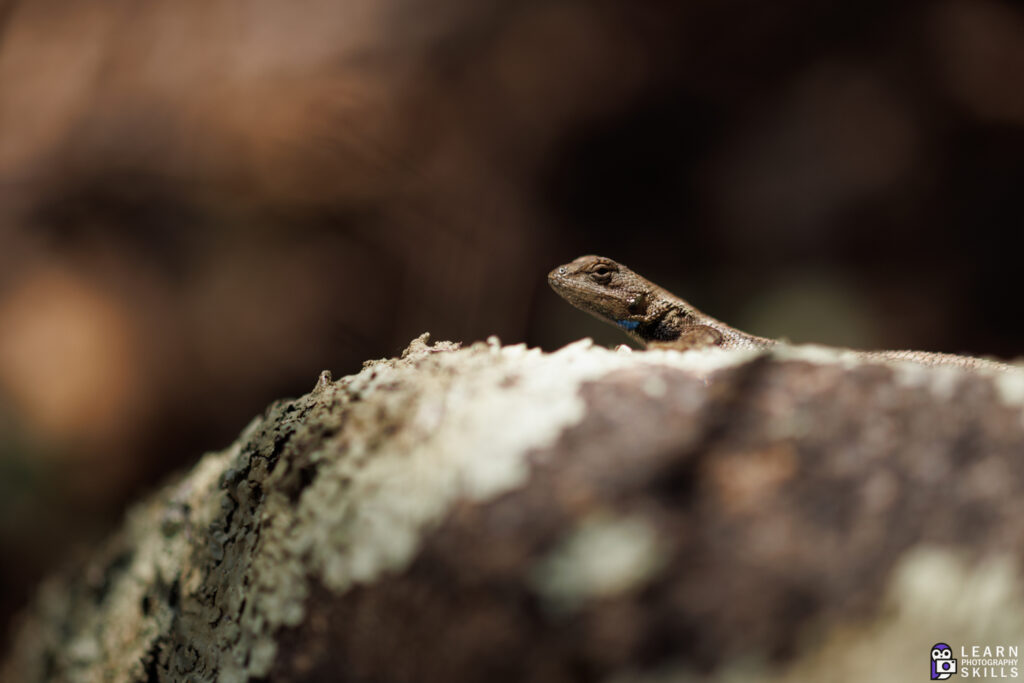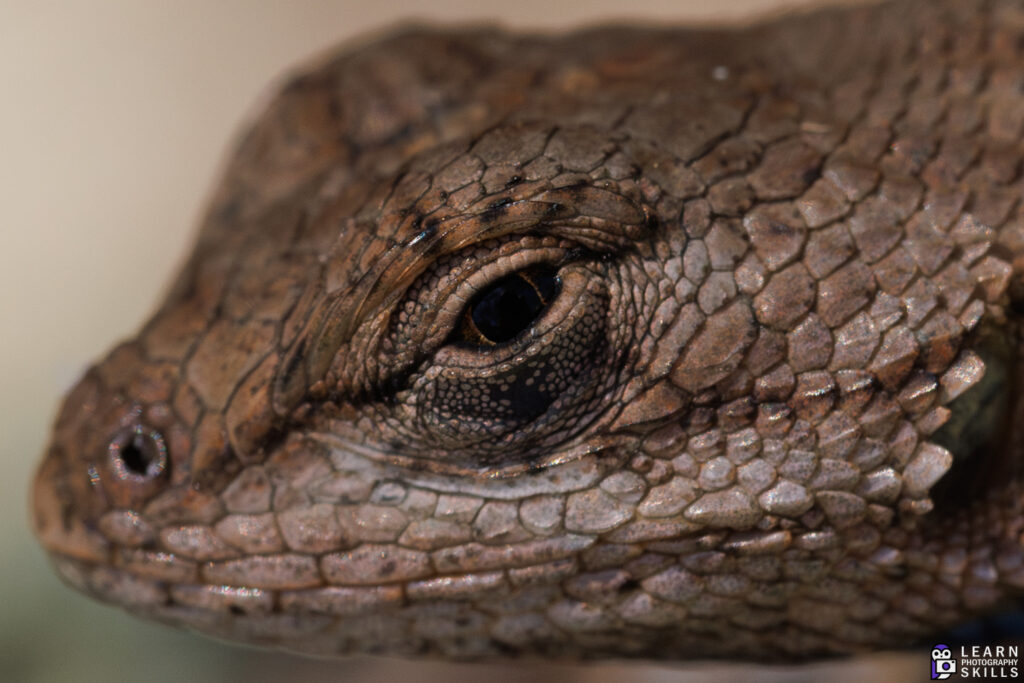Macro lenses have many uses. They can be used for scientific purposes, artistic purposes, and as a way to see things that would normally be invisible to the naked eye. Every once in awhile I take a macro lens with me on a hike in a hope that I will find something interesting to photograph with it. And on a recent hike I did just that! I actually found something interesting to photograph with the macro lens!

At first he ran away from us but as we kept taking pictures he seemed to realize we weren’t trying to hurt him. In this area there are tons of these little lizards scampering about but it took awhile to find one that didn’t run away immediately when we approached it. Amazingly, he allowed us to get super close and I was able to get some amazing macro photos of him sitting on a rock.
This type of lizard is called a Prairie Lizard and they range over most of Southern Missouri. Overall they seem like friendly little lizards that just want to be left alone to bask in the sun.
The best settings for Macro photography are usually the smallest aperture you can get to given the amount of available light. In this case I was using a 100mm lens which isn’t the best choice for 1 to 1 closeups of lizards due to the narrow depth of field, but it is great for full body photos that fill the frame on my EOS R5. Even more than a foot away the 100mm gives a large and detailed image.

Typically I wouldn’t expect to find wildlife that lets me get so close to it with my large full frame camera and 1 to 1 macro lens but this little guy was apparently too lazy to move or maybe he wanted his picture taken, who knows.
It’s really fun when wildlife randomly decides to cooperate with me as a photographer, especially when I actually had the perfect lens for photographing my new lizard friend.

Most of the photos I took used an aperture around f/8 to f/11. I probably should have tried stopping down to f/22 but since we were in the shade of the trees it didn’t seem like the best idea to use such a small aperture for hand held shots. In retrospect it’s easy for me to say I should have used f/22, but at the time I was thinking this lizard may run off on the next photo attempt and I wanted to be 100% sure I got a at least a couple sharp photos with no camera shake and minimal noise.
With 1 to 1 and closer macro photography even stopping down a lot won’t gain much in terms of depth of field. And on top of that, when lenses are used in macro mode they get darker the closer the lens is to the subject. So shooting at f/10 at 1 to 1 magnification is probably more like f/13 maybe even f/16 in terms of light gathering ability of this lens in particular. This is mainly because most macro lenses don’t work like true lenses when focused up close. They work more like magnifying glasses. Basically macro lenses make the image circle larger and in so doing the amount of light hitting the sensor is reduced as the image brightness is proportional to the size of the image circle.

The closeup above shows all the detail around the lizards eye. Seeing them up close shows how intricate these little creatures are. As I was shooting handheld I went with f/10 in this image. If I could work off a tripod in the weird spot where this guy was sitting I might try for a smaller aperture. But, even on this bright sunny day I was shooting with 800 ISO to get a decent shutter speed. With macro photos it’s all about fine details so I always want to shoot with the lowest ISO possible to get the highest quality images possible.
After taking macro photos I hiked some more and I took a few more photos of the area that the Prairie Lizard calls home. I also saw a couple lizards that had their tails missing. One interesting fact of certain lizard species is that they can shed their tails to escape predators. If a predator like a bird grabs the lizard by the tail, it can detach its tail and run away.
Above is the river that created Mr. Lizard’s waterfront habitat. Not a bad place to live! This area of Missouri is called the Arcadia region and this is the St. Francis river. It’s probably best known as a good place to go Kayaking. On a normal day just about anyone can safely kayak down the river although there are some dangerous spots like where the river broke through the old granite damn and now pours through in a large and continuous stream. When the water gets high the effect is even more terrifying. Since this area is almost entirely solid granite that has been carved up by the river over the years, it is very dangerous when the water is high.

Thanks for being our photo subject for the day Mr. Lizard!


